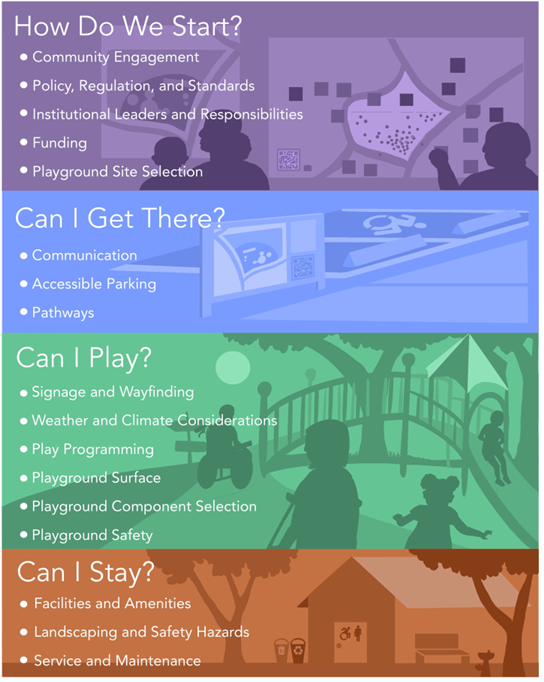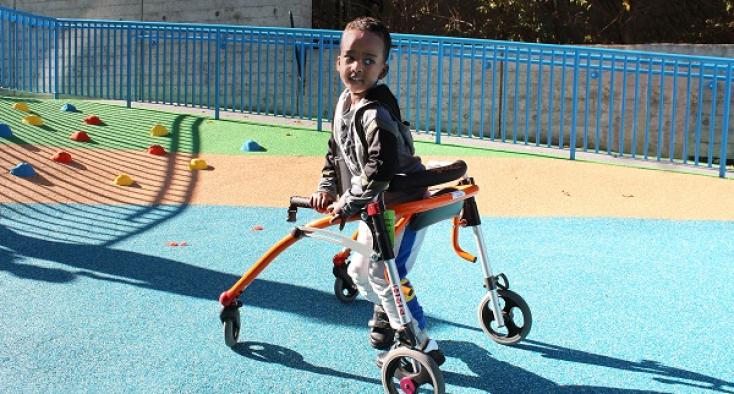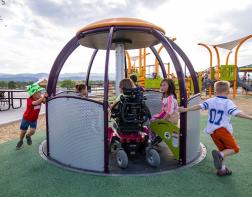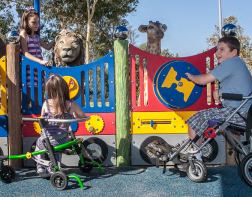EPIC Lab | Inclusive Playgrounds Playbook
Playgrounds are important to children’s health, development, and overall well-being. Yet many playgrounds are still inaccessible for children and adults with disabilities, creating exclusionary experiences that are deeply problematic.
To help address these barriers, our team (Tim Ross, Holland Bloorview Kids Rehabilitation Hospital, University of Toronto; Kelly Arbour-Nicitopoulos, University of Toronto; Ingrid Kanics, Kanics Inclusive Design Services, LLC; Jennifer Leo, University of Alberta) has prepared a report titled, “Creating Inclusive Playgrounds: A Playbook of Considerations and Strategies.”
This playbook offers municipalities, community groups, practitioners (e.g., designers, developers, builders), and families living with disability a comprehensive resource for creating inclusive playgrounds.
The considerations and strategies presented in this report go beyond the borders of playground design by covering topics such as community engagement, play programming, playground surroundings, service and maintenance, and more.
The considerations and strategies have emerged primarily from an international environmental scan of practice-oriented materials concerning inclusive playgrounds. The playbook is structured around four key questions:

(Designed by Serena Sonnenberg)
Some playgrounds are designed and built without necessarily understanding what community members of different abilities, ages, genders, cultures, and income levels want and need from a playground. To create inclusive playgrounds, this lack of understanding of community members’ wants and needs must be addressed. Engaging community members at the start of an inclusive playground project and throughout the entire process can be invaluable to an inclusive playground’s conceptual development, site selection, funding, design, construction, and long-term sustainability.
Designing with playground users rather than for them is a practical and necessary approach for advancing the inclusivity of a playground’s design. In the ‘How Do We Start?” section of the playbook, we consider community engagement activities and tools; the need to account for policy, regulation, and standards; involving institutional leaders and questioning their institutional responsibilities relating to play; how to fund playgrounds; and how to select a playground site.
Ensuring that communities know about an inclusive playground and can access it easily is essential. After all, if people do not know about an inclusive playground – or if the playground is difficult to access – the inclusive play infrastructure may go largely unused.
When sharing information about inclusive playgrounds (e.g., via social media, webpages, on-site communications), accessibility of information must be a priority. Also, ensuring accessible parking and pathways that support easy transitions to and from a playground is necessary. Being mindful of how these transitions will be experienced and ensuring that they are accessible helps to create a welcoming environment for families living with disability.
The ‘Can I Get There?’ section discusses different aspects of accessible communications and presents numerous considerations regarding the design of accessible parking spaces and pathways.
Frequenting asking who can and cannot play is critical for analyzing and making decisions relating to a playground’s inclusive design. For example, decisions about a playground’s surface material alone can make a playground accessible or inaccessible to some (e.g., sand and pea gravel surfaces can keep some children from accessing all playground equipment).
Attention must be also given to selecting play components that support different types of play (e.g., physical, sensory, social, and loose parts play), as well as different challenge levels that suit children’s varying play needs and desires.
Offering various types of each play type is also beneficial. For example, it is useful to provide various physical play components that engage children’s vestibular systems (e.g., via rocking/gliding, sliding, rotation/spinning, swinging) and proprioceptive systems (e.g., via activities that facilitate crawling, climbing, hanging, balancing, walking/running/rolling).
In the ‘Can I Play?’ section, considerations and strategies are presented relating to playground surface materials and designs, play component selection, playground safety, signage and wayfinding, weather and climate, and play programming.
In addition to asking if families with members with disabilities can get to and play on a playground, it is equally important to ask if they can stay at the playground as long as they would like.
To help families stay as long as they desire, it is important to design an inclusive playground’s surroundings with the same care and attention given to the playground itself. This is because an inadequate surrounding environment may render the playground inaccessible/unsafe to some, cause playground experiences to be cut short, or deter children and caregivers from visiting the playground in the first place. For example, if there is no accessible washroom nearby (or, if the pathway to an accessible washroom is unsafe/inaccessible), children with disabilities may not be able to stay at a playground as long as they would like because a washroom trip means they must leave.
In the ‘Can I Stay?’ section, considerations and strategies and presented relating to facilities and amenities, landscaping and safety hazards, and service and maintenance.
This work has been generously supported by the Canadian Tire Jumpstart Charities’ Inclusive Play Project and their mission to build more inclusive place spaces across Canada.
Watch Holland Bloorview Kids Rehabilitation Hospital’s fully accessible playground in action. This playground was built with the generous support of Holland Bloorview’s Grow HB Research donors.


